COMMUNITY ENGAGMENT PROGRAMS
SVW works with local communities to raise their awareness toward wildlife conservation and law enforcement, find viable alternative livelihoods to reduce their impacts on forest resources, and inspire them to protect wildlife.
In SVW’s 2018 background research, we interviewed 1,718 forest-dependent people in and around Pu Mat National Park, identified several common ‘hotspots’ of hunting wildlife in the Park, and have helped us build some guidance on the activities that could be done to reduce the involvement of these communities in illegal hunting.
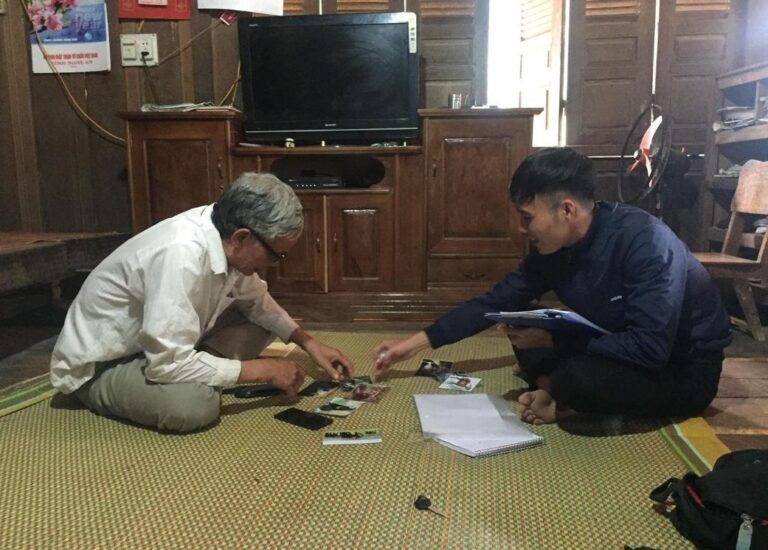
Orgranizing Community Engagement Workshops
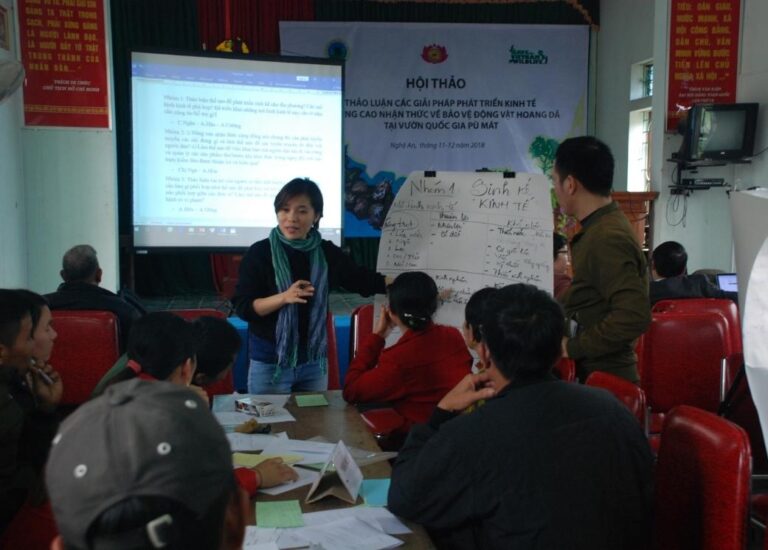
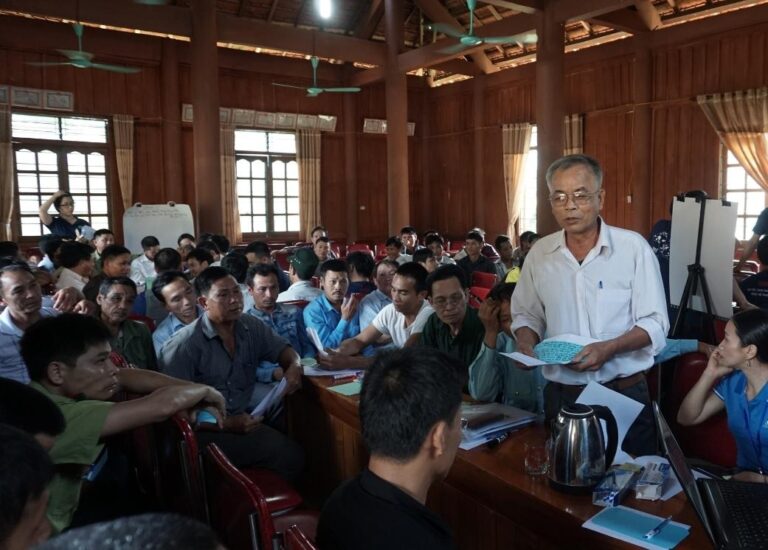
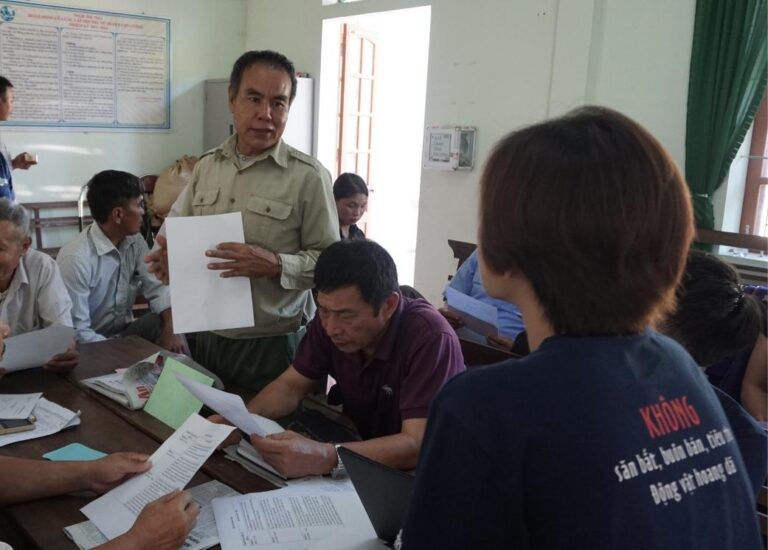
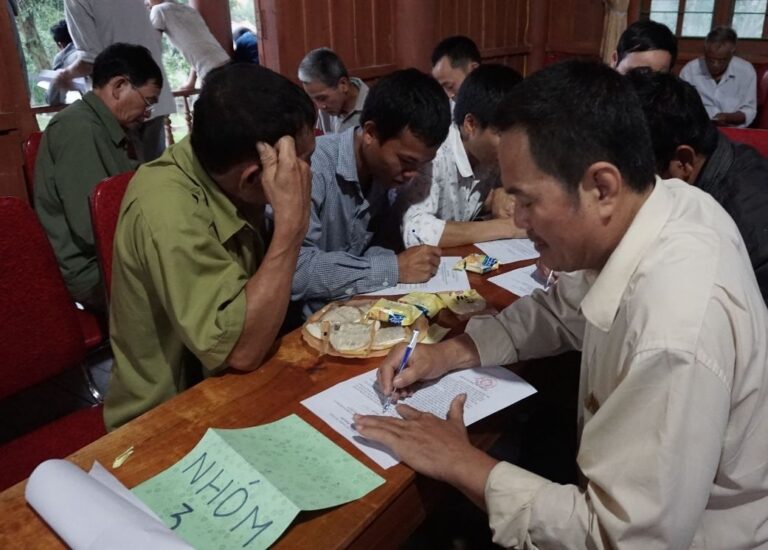
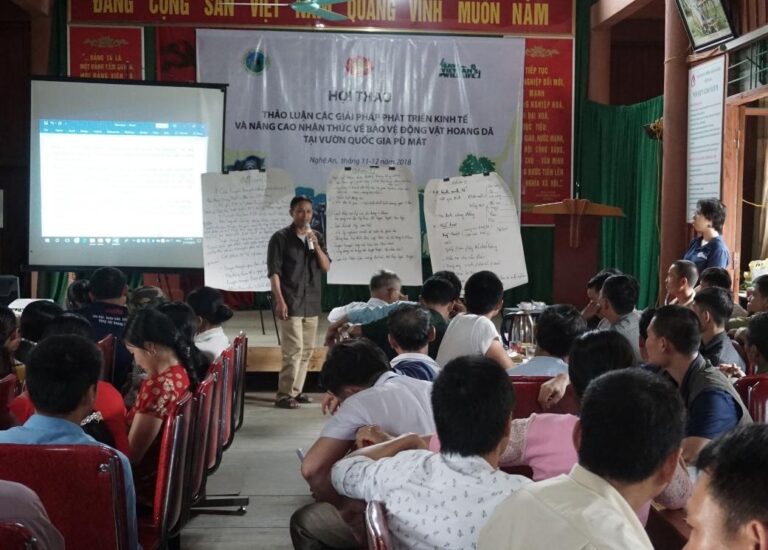
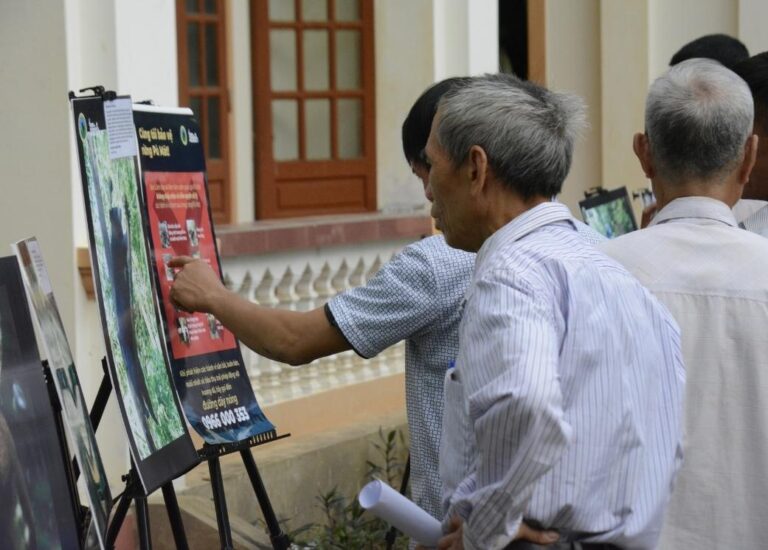
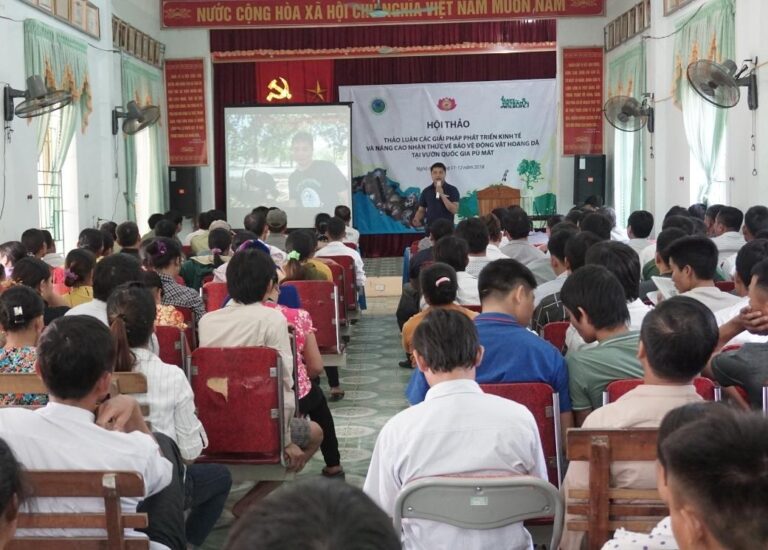
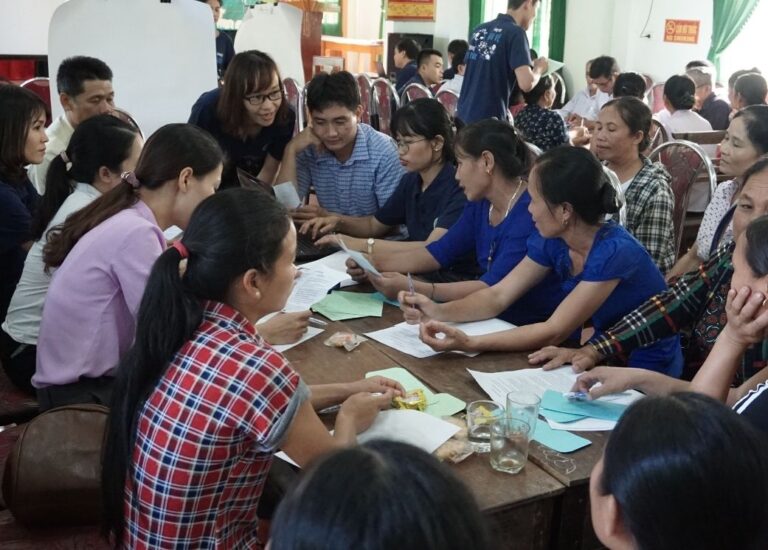
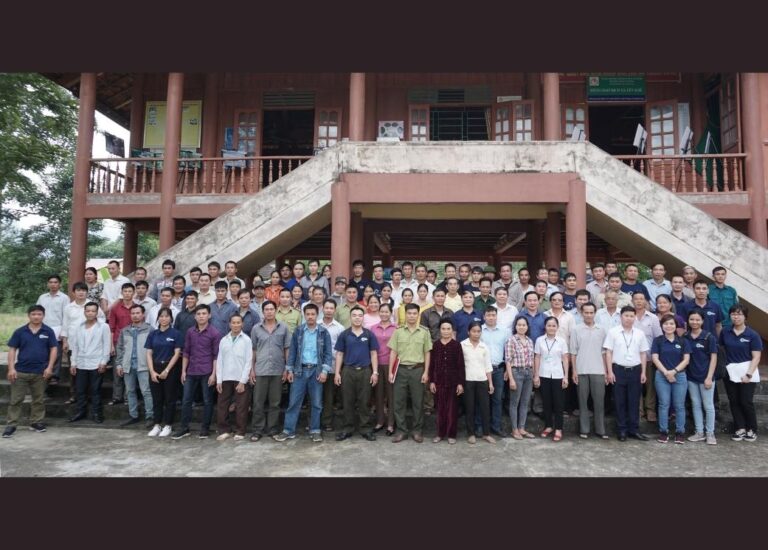
On the basis of that research, in late 2018 and early 2029, we worked with Pu Mat National Park to deliver 9 community workshops in these poaching ‘hotspots’. A total of 1,119 people attended their workshops, including local villagers, community leaders, and members of the local government. Discussions were held on how enforcement could be improved and what viable economic alternatives there were to wildlife hunting. These 1,119 people signed the pledge to not eat, consume, hunt, and trade wild animals.
These workshops have created huge changes in the local communities. According to a survey on 27 villages near Pu Mat National Park, one-third of the working-age people left the villages where the workshops took place to seek employment after the Lunar New Year 20019. This number of labor migration has increased sharply compared to previous years, and many local people have mentioned to us that it may partly be the result of strengthening law enforcement and community education workshops.
Using large billboards to raise people's awareness about law Enforcement on forest protection
In order to raise awareness about wildlife protection and law enforcement, SVW, in collaboration with Pu Mat National Park, has completed the installation of 35 large-size billboards at the entrances to the forest, on the traffic roads, open trails, in hot spots of hunting and trading wildlife in three districts of Nghe An province, including Con Cuong, Anh Son, and Tuong Duong. This activity resonates with the strengthening of law enforcement, habitat protection, and conservation research, which aims to provide a comprehensive solution to ensure a safe living environment for wild animals. Find more details about the activity here.
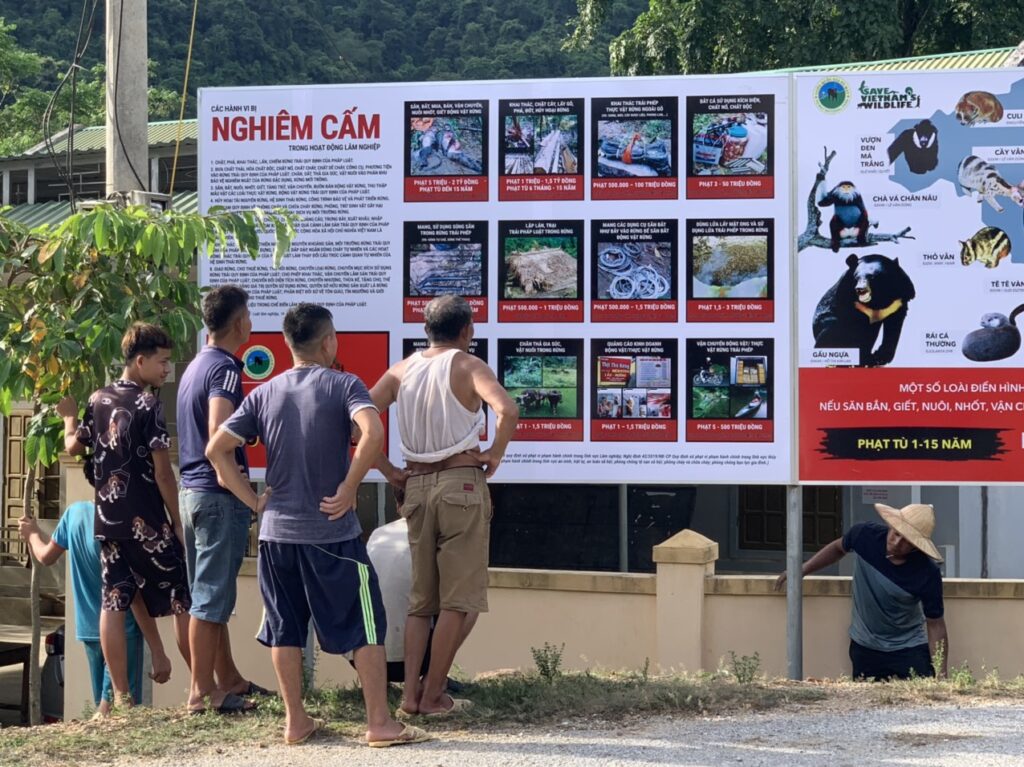
Developing more self-sustained education outreach tools to encourage forest-dependent people to take informed actions to protect wildlife
SVW aims to create conservation tools that are simple and low-cost, so that Pu Mat’s rangers, teachers, and local government officials can use them for a long time to raise awareness for local communities and school children. Therefore, we plan to create a series of bilingual broadcasting episodes (in Vietnamese and a minority ethnic language) to spread information and messages about wildlife conservation to the local communities and school children. The audio will be recorded and stored in memory cards to distribute to the Park’s rangers, teachers and local government officials to regularly broadcast in the long term through villages’ radio speakers.
In addition, we will create a handy propaganda toolkit so that the Anti-poaching team and the Park’s rangers can bring along and use it to talk with communities during their patrol or meetings with the community. It is hoped to increase sustainability resulting in the long-term impact of the activities and community engagement program.
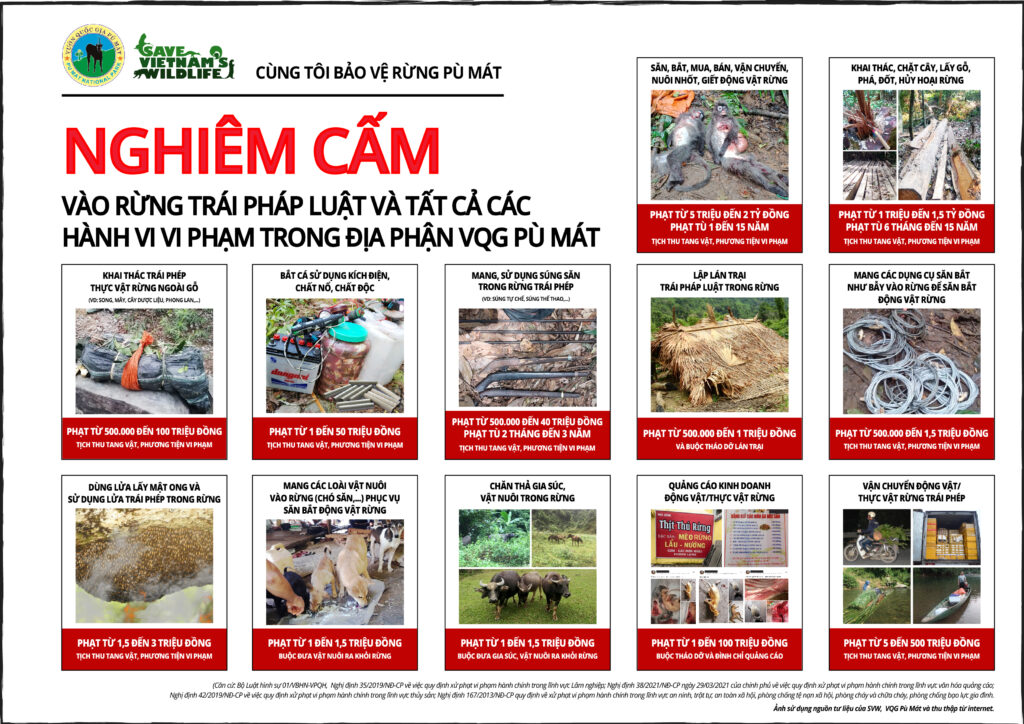
Developing alternative livelihoods for forest-based communities to reduce their negative impacts on natural resources
Over 88,9% of poor and near-poor households surveyed in the buffer zone of Pu Mat National Park said that earning money for a living is the main reason for their violations in the forest (SVW, 2018). SVW and local partners have made numerous efforts to increase their incomes which hopefully reduces their entry into the forest for illegally hunting wild animals and exploiting other forest resources. For instance, SVW is supporting Pu Mat National Park to increase the productivity of contracted forest protection to improve people’s benefits.
Moreover, SVW aims to develop appropriate alternative livelihoods or introduce more labor options to the local communities. We collected opinions about alternative livelihood development from 2,837 community leaders and people from 105 villages in 16 communes around the National Park. Based on that, we are planning to connect businesses and social enterprises to develop and implement alternative livelihoods in the area. These alternatives would make use and take advantage of the previous livelihoods that work in the area to ensure cost efficiency, local approval, and participation, and at the same time minimize possible harms to natural resources and wild animals.
